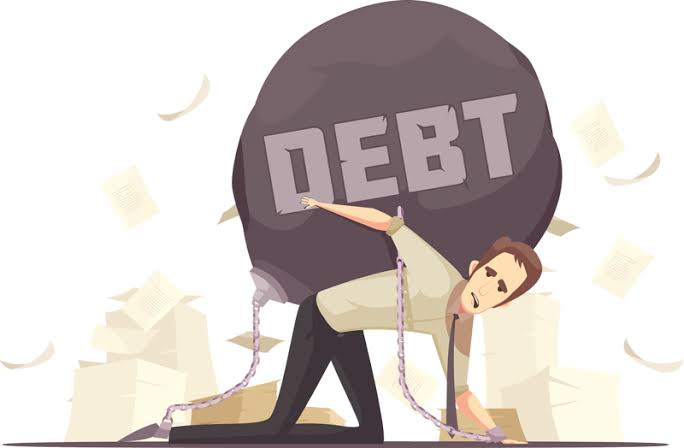
SIMPLY AMAZING, ALWAYS FOR YOU.
Over the past two decades, China has become one of the world’s largest creditors, lending billions of dollars to countries across Africa, Asia, and beyond. Through its Belt and Road Initiative (BRI) and other financial agreements, China has provided funds for infrastructure projects, economic development, and emergency financial assistance. However, this lending spree has also led to significant debt burdens for many nations. In this article, we will explore the ten countries that owe the most to China and discuss the broader implications of this debt.

1. Pakistan – $26.6 Billion
Pakistan is the largest debtor to China, with external debt reaching approximately $26.6 billion. Much of this debt is tied to the China-Pakistan Economic Corridor (CPEC), a key component of the BRI. The CPEC has funded major infrastructure projects, including highways, railways, and energy plants. However, concerns have been raised over Pakistan’s ability to repay its loans, as the country has repeatedly sought debt relief from China and the International Monetary Fund (IMF).
2. Angola – $21.0 Billion
Angola is the second-largest debtor to China, owing around $21 billion. The country’s reliance on Chinese loans stems from its extensive oil trade with Beijing. Angola, one of Africa’s largest oil producers, has used Chinese financing to rebuild infrastructure after years of civil war. However, the country’s heavy dependence on oil exports to service its debt means that fluctuations in oil prices can make repayments challenging.
3. Sri Lanka – $8.9 Billion
Sri Lanka has borrowed heavily from China to fund large-scale infrastructure projects, such as the Hambantota Port and Colombo Port City. However, financial mismanagement and economic downturns have made repayment difficult. In 2017, Sri Lanka was forced to lease the Hambantota Port to China for 99 years after failing to meet debt obligations. This has fueled concerns about China’s growing influence over strategic assets in debt-ridden countries.
4. Ethiopia – $6.8 Billion
Ethiopia, one of Africa’s fastest-growing economies, has borrowed about $6.8 billion from China to finance infrastructure projects, including railways and industrial parks. While these projects have contributed to economic growth, Ethiopia’s debt burden has increased concerns over repayment sustainability. In recent years, Ethiopia has sought debt restructuring agreements to ease its financial pressure.
5. Kenya – $6.7 Billion
Kenya owes China approximately $6.7 billion, largely due to infrastructure projects such as the Standard Gauge Railway (SGR), which connects Nairobi to the port city of Mombasa. The railway project, funded by Chinese loans, has faced financial difficulties, with Kenya struggling to meet its debt repayments. There have been fears that failure to service the debt could result in China taking control of key national assets, though Kenyan authorities have dismissed such claims.
6. Bangladesh – $6.1 Billion
Bangladesh has borrowed about $6.1 billion from China to support energy, transportation, and communication projects. While these loans have contributed to economic development, concerns remain about rising debt levels and the country’s reliance on Chinese credit. Bangladesh has sought to diversify its sources of external funding to reduce dependence on a single creditor.
7. Zambia – $6.1 Billion
Zambia has struggled with debt distress in recent years, with around $6.1 billion owed to China. The country has borrowed heavily for infrastructure projects, particularly in the energy and transportation sectors. However, Zambia became the first African nation to default on its debt during the COVID-19 pandemic, raising concerns about the sustainability of Chinese loans to developing countries.
8. Laos – $5.3 Billion
Laos, a small Southeast Asian country, owes around $5.3 billion to China, a significant amount relative to its economy. Much of this debt has been used to finance hydroelectric dams, roads, and railways. One of the most notable projects is the China-Laos railway, a major component of the BRI. However, concerns about Laos’ ability to manage its debt have grown as the country faces financial struggles.

9. Egypt – $5.2 Billion
Egypt has borrowed approximately $5.2 billion from China, mainly for infrastructure projects such as power plants, industrial zones, and transportation networks. The country has strategically leveraged Chinese funding to support economic growth, though rising debt levels have prompted discussions about long-term financial sustainability.
10. Nigeria – $4.3 Billion
Nigeria, Africa’s largest economy, owes China around $4.3 billion. The loans have been used to finance key infrastructure projects, including railways, highways, and power stations. While these investments have supported economic development, concerns remain over Nigeria’s ability to service its debt amid fluctuating oil prices and economic challenges.
The Global Implications of Chinese Debt
China’s role as a global lender has sparked both opportunities and controversies. On one hand, Chinese loans have helped developing countries build much-needed infrastructure and stimulate economic growth. On the other hand, concerns about “debt-trap diplomacy” have emerged, with critics arguing that China uses debt as a tool to exert political and economic influence over borrowing nations.
Many of these countries have sought debt restructuring or relief to avoid financial crises. China has responded by granting debt payment extensions or partial relief in some cases, but the long-term sustainability of these loans remains a topic of debate.
Moreover, as global economic conditions fluctuate, countries heavily indebted to China may face increasing pressure to meet repayment obligations. This could lead to more instances of asset seizures, renegotiated agreements, or even financial defaults, similar to what has been seen in Sri Lanka and Zambia.
Conclusion
The growing debt burden among developing nations raises important questions about financial sustainability and economic sovereignty. While Chinese loans have facilitated significant infrastructure development, they have also left many nations struggling with mounting repayment obligations. As global economic uncertainties persist, indebted countries must carefully manage their financial commitments to avoid potential economic distress.
In the years ahead, transparency in loan agreements, diversified borrowing sources, and sound financial management will be crucial for countries seeking to balance economic growth with debt sustainability. The relationship between China and its debtor nations will continue to evolve, shaping global finance and international relations for years to come.

